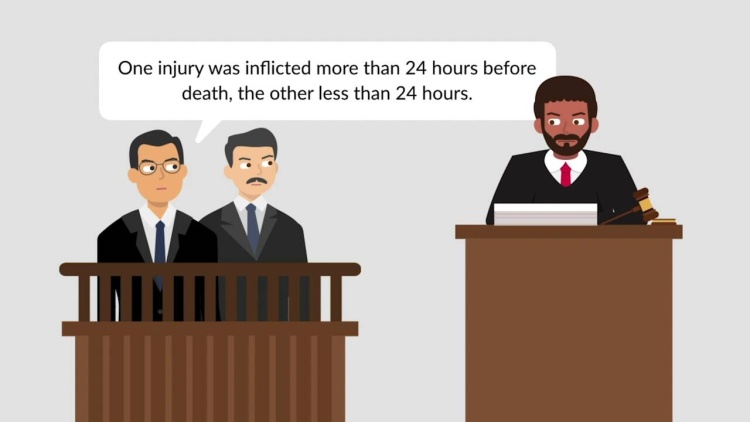Oxendine v. State
Delaware Supreme Court
528 A.2d 870 (1987)
- Written by Jamie Milne, JD
Facts
Jeffrey Oxendine (Oxendine) (defendant) lived with his girlfriend, Leotha Tyree, and his six-year-old son, Jeffrey Jr. (Jeffrey). One morning, Tyree pushed Jeffrey into the bathtub, causing microscopic tears in Jeffrey’s intestines that led to peritonitis. The next morning, Oxendine beat Jeffrey, inflicting a second abdominal injury. Later that day, Jeffrey’s abdomen swelled, and Jeffrey complained of extreme pain. He died shortly after. Oxendine and Tyree were charged with manslaughter. In its case-in-chief, the state called medical examiners Drs. Inguito and Hameli to testify. They agreed that Jeffrey suffered two distinct injuries. Dr. Inguito testified that it was possible both injuries contributed to Jeffrey’s death but that he was unable to say which injury in fact caused the death. He did not discuss whether the second injury accelerated Jeffrey’s death. Dr. Hameli testified that the first injury was the underlying cause of death. He stated that the second injury could have contributed but that he was unable to say whether the second injury accelerated Jeffrey’s death. After the state made its case, Oxendine moved for a judgment of acquittal. The trial court denied his motion. Subsequently, Tyree called Dr. Hofman, who testified that if a child suffered two separate blunt-force traumas to his abdomen, the second would accelerate the child’s death. Regarding causation, the trial court instructed the jury that Oxendine’s conduct was the cause in fact of Jeffrey’s death if it caused Jeffrey to die any sooner than he otherwise would have. The jury convicted Oxendine of manslaughter. Oxendine appealed, arguing that the state failed to produce sufficient evidence to prove causation.
Rule of Law
Issue
Holding and Reasoning (Horsey, J.)
What to do next…
Here's why 899,000 law students have relied on our case briefs:
- Written by law professors and practitioners, not other law students. 47,000 briefs, keyed to 994 casebooks. Top-notch customer support.
- The right amount of information, includes the facts, issues, rule of law, holding and reasoning, and any concurrences and dissents.
- Access in your classes, works on your mobile and tablet. Massive library of related video lessons and high quality multiple-choice questions.
- Easy to use, uniform format for every case brief. Written in plain English, not in legalese. Our briefs summarize and simplify; they don’t just repeat the court’s language.





